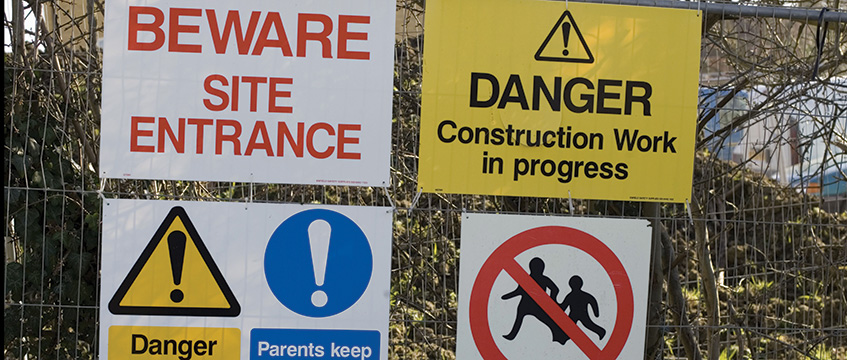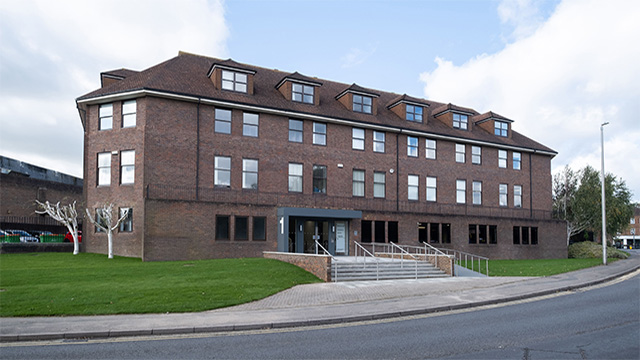Mainly for students: health and safety essentials for property professionals
Ensuring good health and safety in the workplace can mean the difference between life and death.
Many students may already know about the shocking and unthinkable events that happened to Suzy Lamplugh in July 1986. She was an estate agent who disappeared while carrying out a viewing in Fulham, London. Her body was never found and she was legally declared dead in 1993, presumed murdered.
How many of you have been in part-time or temporary full-time workplace situations where you did not feel safe? Did you know the procedures to follow? Or the reason you were being asked to follow them?
Ensuring good health and safety in the workplace can mean the difference between life and death.
Many students may already know about the shocking and unthinkable events that happened to Suzy Lamplugh in July 1986. She was an estate agent who disappeared while carrying out a viewing in Fulham, London. Her body was never found and she was legally declared dead in 1993, presumed murdered.
How many of you have been in part-time or temporary full-time workplace situations where you did not feel safe? Did you know the procedures to follow? Or the reason you were being asked to follow them?
What guidance to follow?
The RICS guidance note Surveying safely: health and safety principles for property professionals (2nd Edition, November 2018) has replaced the former 1st Edition as of February 2019. For residential surveyors, this is supplemented by the RICS guidance note Health & safety for residential property managers (1st Edition, January 2016).
These incorporate the principles of key legislation, such as the Health and Safety at Work Act 1974 (the 1974 Act) and Corporate Manslaughter and Corporate Homicide Act 2007 (the 2007 Act).
Under the 1974 Act, an employer has a duty, as far as is reasonably practicable, to protect employees’ health, safety and welfare at work. It is a criminal offence to breach the Act, with penalties including an unlimited fine and imprisonment.
A director or manager can be liable for a company’s breach committed with consent or neglect and an employee can be held personally liable if they intentionally or recklessly interfere with or misuse any health and safety precautions.
What does the guidance say?
The updated RICS Surveying safely… provides an overview of best practice relating to health and safety in the workplace. It emphasises that there is both a corporate and personal responsibility to ensure this. It specifically introduces the “safe person” concept, whereby each individual assumes responsibility for their own, their colleagues’ and others’ health and safety while at work.
RICS-regulated firms must, as part of this, provide a safe working environment, work equipment and systems of work. There is a greater emphasis on ensuring the competence of individuals, including their responsibility to ensure the use of safe work equipment and safe systems of work. This means that a firm’s health and safety policy may include some of the following:
Staff training, including providing knowledge about the potential hazards in your working environment.
Providing you with personal protective equipment (PPE), for example, ear defenders, helmet, hi-vis jacket, and so on, suitable for the purposes for which it is intended.
Providing clear instructions, supervision and expert support relating to your work activities, operation of equipment and appropriate safe systems of work.
Procedures to take account of time pressures, distractions, interruptions, fatigue, inexperience and a lack of knowledge.
Line management structure to lead from the top in relation to health and safety.
Policy and procedures relating to relevant issues, which may include manual handling, fire risk, working hours, driving, stress and lone working.
What is a risk assessment?
This is defined as carefully examining what could cause harm, so that you can judge whether or not you have taken sufficient precautions to prevent harm happening, how your plan of action could deviate from your expectations and what might the consequences be.
Key terms to understand are (i) a hazard – something with the potential to cause harm – and (ii) a risk – the likelihood
of harm being realised.
The key steps to carrying out a risk assessment within a firm should always include:
Identifying the hazards.
Deciding who may be harmed and how.
Evaluating risks and deciding on precautions.
Recording findings and implementing procedures.
Reviewing and updating policy.
Advising all those affected of the outcome of the assessment and methods of work, or other control measures necessary to minimise or eliminate risk
This should be based on the hierarchy of risk control. This means there should be a preference to eliminate the hazard, perhaps by way of redesigning the activity so the hazard is removed, for instance, a drone to avoid working at height (but at the same time being sure that the drone itself would not cause potential harm to a third person/passer by).
If this is not possible, then a substitution should be considered. This could be replacing the proposed work process with a less hazardous one – for example, using pre-prepared components rather than cutting on site.
Alternatively, engineering controls could be used – for example, using equipment to prevent falls or enclosing equipment to separate employees from the hazard.
If it is not possible to implement any of the above, administrative controls should be used to identify and implement procedures to work safely – for example, reducing the need for lone working or ensuring work is undertaken in daylight.
Finally, if none of the above are possible then PPE must be used, along with an emergency alarm where lone working cannot be avoided.
In any case, you should always be dynamically assessing risk on site – being aware of and alert to potential risks in real time. This is because the situation on the day may change despite a careful and prudent assessment of risk prior to attending site.
You may, therefore, decide to withdraw from an inspection if you encounter a hazard that you did not anticipate in your desktop risk assessment.
What should a surveyor do?
Make sure that you have read your firm’s health and safety policy, as well as the guidance contained within RICS’ Surveying safely…. Most importantly, however, follow your gut instinct – generally, if you feel that something is not right, then it isn’t.
You should also be aware that you have individual responsibilities, such as:
Ensuring you are competent to perform your work safely, including understanding the limits of your competence.
Being able to recognise and adapt to changing circumstances at all times through desktop and dynamic risk assessment.
Remaining vigilant, at all times, for the safety of yourself and others.
Being an effective member of a team, to ensure you remain safe in the workplace.
Reporting any breaches of health and safety rules and regulations and reporting any actual, potential or perceived risks to your line manager
Wearing PPE correctly.
Attending staff training and taking responsibility to develop your own understanding of specific health and safety issues relating to your work.
Handling stress
It is also important to ensure that work-related stress is minimised.
This is generally defined as an individual’s adverse reaction due to excessive pressure or other demands placed on them at work. Demands could relate to your workload, work patterns or the work environment.
Key ways to tackle work-related stress are support from your firm, promoting positive working relationships to avoid conflict and deal with unacceptable behaviour, and ensuring that organisational change, however minor or major, is managed and communicated effectively.
If you are in doubt about any issues, speak out and ensure that you remain safe and healthy at work: better safe than sorry.
Things you can do to stay safe on site
Take a charged mobile and personal alarm
Plan an escape route
Implement a call-back system with office
Make your daily schedule available to colleagues through Outlook or written on a whiteboard, including updates if plans change
Be careful in roof voids and when using ladders. If in doubt, don’t go up – and record the limitation in your client advice or report
Park your car close by and keep your keys on you
Make sure you know who you are meeting
Understand the site rules for construction sites and ensure you sign in and out, on site
Be aware of aggressive occupants and dogs
Wear gloves where sites or rooms look dirty or otherwise hazardous
Inform others of any medical conditions
Jen Lemen is a director of Property Elite, which provides support, training and CPD to RICS APC candidates, qualified property professionals and students. Mainly for Students is edited by Paul Collins, a senior lecturer at Nottingham Trent University. He welcomes suggestions for the column and can be contacted at paul.collins@ntu.ac.uk











